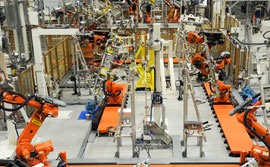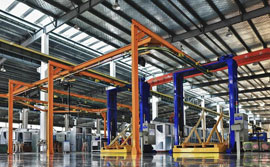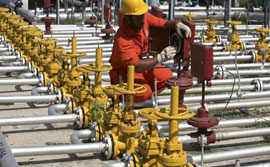
RIGHT QUALITY
The quality of product is established based upon the customers needs. The right quality is not necessarily best quality. It is determined by the cost of the product and the technical characteristics as suited to the specific requirements.
PLANNING
Activities that establishes a course of action and guide future decision-making is planning.The operations manager defines the objectives for the operations subsystem of the organization, and the policies, and procedures for achieving the objectives. This stage includes clarifying the role and focus of operations in the organizations overall strategy. It also involves product planning, facility designing and using the conversion process.

RIGHT QUANTITY
The manufacturing organization should produce the products in right number. If they are produced in excess of demand the capital will block up in the form of inventory and if the quantity is produced in short of demand, leads to shortage of products.
ORGANIZING
Activities that establishes a structure of tasks and authority. Operation managers establish a structure of roles and the flow of information within the operations subsystem. They determine the activities required to achieve the goals and assign authority and responsibility for carrying them out.

RIGHT TIME
Timeliness of delivery is one of the important parameter to judge the effectiveness of production department. So, the production department has to make the optimal utilization of input resources to achieve its objective.
CONTROLLING
Activities that assure the actual performance in accordance with planned performance. To ensure that the plans for the operations subsystems are accomplished, the operations manager must exercise control by measuring actual outputs and comparing them to planned operations management. Controlling costs, quality, and schedules are the important functions here.
BEHAVIOUR
Operation managers are concerned with how their efforts to plan, organize, and control affect human behaviour. They also want to know how the behaviour of subordinates can affect managements planning, organizing, and controlling actions. Their interest lies in decision-making behaviour.

RIGHT MANUFACTURING COST
Manufacturing costs are established before the product is actually manufactured. Hence, all attempts should be made to produce the products at pre-established cost, so as to reduce the variation between actual and the standard (pre-established) cost.
MODELS
As operation managers plan, organise, and control the conversion process, they encounter many problems and must make many decisions. They can simplify their difficulties using models like aggregate planning models for examining how best to use existing capacity in short-term, break even analysis to identify break even volumes, linear programming and computer simulation for capacity utilisation, decision tree analysis for long-term capacity problem of facility expansion, simple median model for determining best locations of facilities etc.